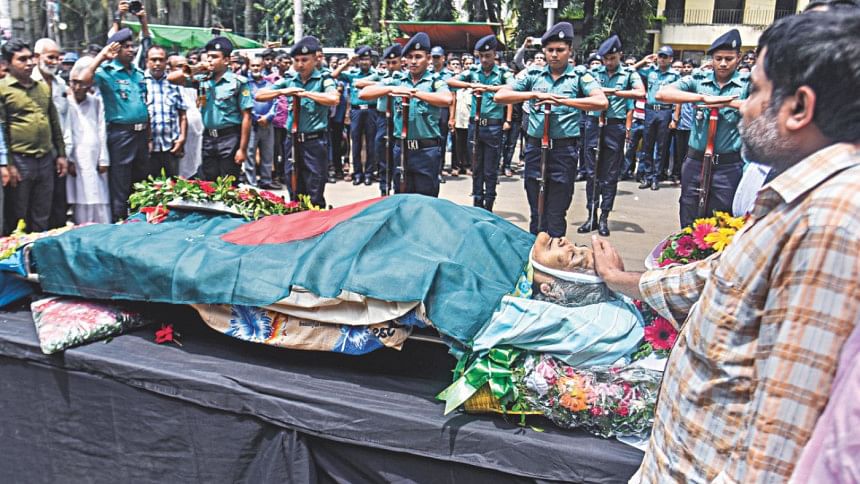Tribute to Rama Chowdhury

Many know about the heartbreaking story of Birangana Rama Chowdhury's life. In May 1971, she was brutally tortured and violated by the Pak bahini; she lost three of her four children over the next few decades and also wrote her stories in many books, of which only 18 have been published.
But what we never realised about the Ekattorer Janani, is the fact that she never stopped dreaming – of sharing and spreading her stories – true stories of pain, struggle and achievement. “She never approached mainstream publishers to publish her books,” says Alauddin Khokon, her personal assistant and close aide, who is more than a family member. “She would publish them herself and I would also help her publish the books.” Her books spoke of the liberation war, the sufferings of the common people in the war zone, the woes of a mother and so much more. “She would also move from door to door, person to person to sell her books,” he adds.“Right till the very end, she was very strict about not displaying her books at bookstores and outlets.”
Rama Chowdhury, a writer, teacher and Birangona passed away yesterday of old age complications, at the age of 82, in Chittagong Medical College Hospital. Born in in 1936 in Popadia, Boalkhali in Chittagong, Rama Chowdhury obtained her MA in Bengali Literature from Dhaka University in 1961. She was the headmistress of Cox's Bazar High School in 1962.
Rama resonates strength, perseverance and trustworthiness. After she lost her eldest son right after the war and her second child a year later in 1972, she was obviously devastated. For years, she would not wear shoes and preferred to walk bare feet. Her sons and all the other Muktijoddhas sacrificed their lives fighting for liberation on this very soil, she would say. Many of them are still in deep slumber underneath the earth we tread on, and thus refused to walk with her shoes on.
Even though she did go back to wearing shoes after years, her determination to walk bare feet became all the more strong when she lost her third child in 1998 in a road accident. “She never stopped talking about her children who she had lost over the years,” says Khokan. “She would think of them, and shed tears day and night. She would also talk about them with others wherever she went. She had also stopped eating rice more than once a day, thinking of her son who hardly had a decent meal right before he died during the liberation war.”
Jathor Neela, a documentary film on the life of Rama Chowdhury, has been under way for the last 6 years. The film will be out in December this year.
However, the maker, Dilara Begum Joli, prefers to call it a visual moving image, rather than a documentary film. “I am a painter and not a filmmaker,” says Joli.
“However, I could relate to Rama di very much. The tendency to fight for what is right and stay alive with dignity, is Rama di. Breaking barriers and creating something new, is Rama di.”
Joli never had a script for her film. “I just followed Rama di around for the last 6 years and listened to her talk,” says Joli. “She would sometimes tell me -- you want to know everything. How can I tell you everything? So much has happened that simply cannot be told. They need to be felt and experienced.”
According to Alauddin Khokan, Birangona Rama Chowdhury deserved much more, but the authorities failed to understand.
When Rama Chowdhury had gone into a coma back in 2005 for 7 days, she had lost her memory after coming about and was in bad condition, says Khokan.
“She was unwell and needed help – both financial and medical. Even though the government had provided her with free medical assistance in Chittagong Medical College Hospital, she had other needs that needed to be taken care of as well and was struggling to make ends meet. Some of us tried our best to help her out, others would simply come to take a picture with her.”
Rama Chowdhury should be an inspiration to many, especially to the young souls who yearn for individuals to look up to. Even though her soul prepares to leave for the other world, the stories of her struggles, agony and accomplishments should live on for generations to come.

 For all latest news, follow The Daily Star's Google News channel.
For all latest news, follow The Daily Star's Google News channel. 



Comments